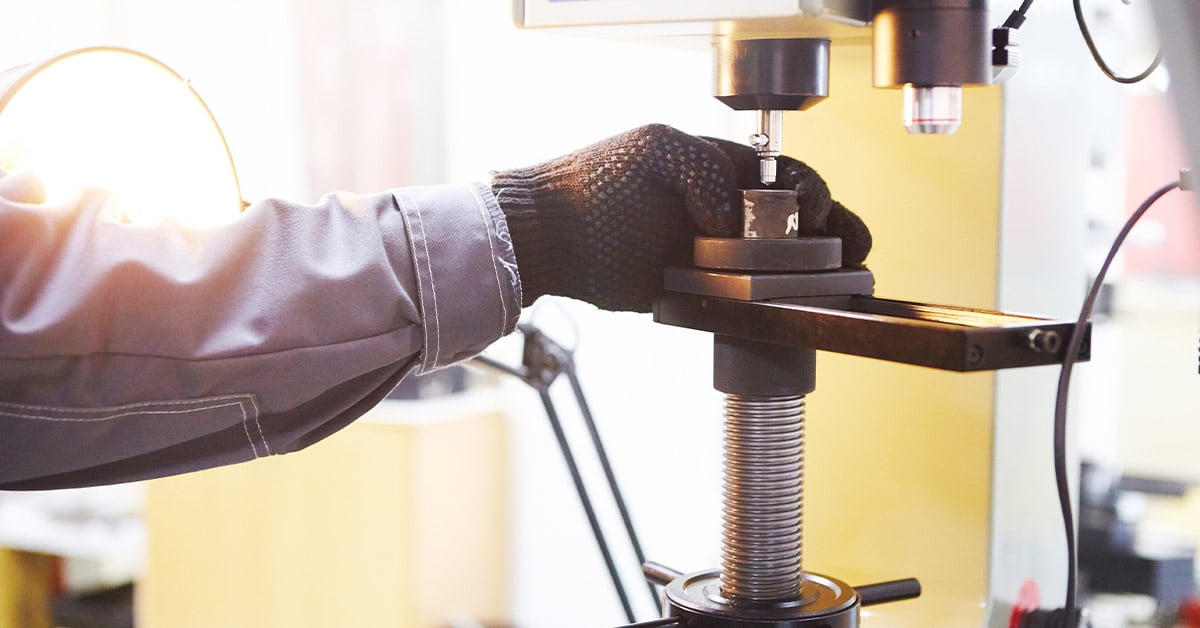Manufacturers need to be certain that the products they put out into the marketplace are of the highest possible quality. This is important for not only maintaining their reputation with their customers, but also meeting certain regulatory standards. Rather than simply crossing their fingers every time they release a new product and hoping for the best, they put it through a rigorous testing process to ensure its reliability and quality. There are a range of methods for conducting such tests, which typically fall into one of two categories: destructive testing and non-destructive testing.
The key difference between destructive and non-destructive testing methods can be guessed easily just by looking at the terms. Within each category, however, there are many different techniques that can be applied to the manufacturing process. Understanding the nuances within destructive and non-destructive testing is key to deciding the proper course of action for whatever product you are developing. Read on to learn more about these two concepts and their applications.
What is destructive testing?
In the simplest of terms, destructive testing refers to putting an object or material under extreme stress until it hits its breaking point. Based on the amount of force the test subject can withstand until it deforms, breaks or shatters, testers can learn a lot about its physical properties. Some of the most common forms of destructive testing include:
- Tensile — This involves pulling on the sample and studying how it performs under tension. For example, plastics can be stretched until they snap, which provides information about its tensile strength.
- Impact — Under this type of testing, a sample material is subjected to a sudden impact. The amount of force usually is increased until the sample is deformed or broken, at which point the testers note the measurement to determine its overall durability.
- Hardness — There are a variety of tests used to ascertain a subject’s resistance to permanent deformation. Many of these involve the use of a bit that is applied to the surface of the material, with the amount of pressure gradually increasing.
- Fatigue — Rather than testing a subject’s specific breaking point, this test measures its ability to withstand repeated applications of force. This can involve twisting it, bending it and/or compressing it. The purpose of this test is to determine how long the material can maintain its integrity through constant stress.
The key applications of destructive testing are for verifying the durability of materials or components before they go into mass production. This is essential in manufacturing because it enables manufacturers to know exactly what limitations their products have. These processes provide extremely detailed information about the properties of certain materials, giving manufacturers a clear idea of under what conditions their products may fail. Based on the data they collect during these tests, they can provide detailed warnings about proper usage and ensure their products will be used as safely as possible.
What is non-destructive testing (NDT)?
In contrast to destructive testing, non-destructive testing methods don’t put any stress on the components or materials being tested. Instead, testers use technology to assess the condition and quality of the test subjects while leaving them in their original condition. There is a wide range of techniques available that fall into this category, including:
- Ultrasonic — Bombarding the test piece with ultrasonic sound waves, this method measures the variances in the waves as they pass through the material and bounce back to the source. Ultrasonic detection can tell testers a lot about the thickness and condition of the piece being tested.
- Radiographic (X-rays) — This method subjects the test piece to X-ray exposure, much in the same way a patient is x-rayed at the doctor’s office. This can reveal hidden impurities or defects inside the test subject.
- Magnetic particles — By surrounding the test piece with a magnetic field and introducing tiny ferrous particles, testers can identify any areas where there may be flaws or defects. The particles are attracted to areas where there is a leakage of magnetic flux, which could indicate a flaw in the material.
- Dye penetrant — In this technique, a penetrant containing dye is applied to the surface of the test subject. After the dye on the surface is wiped away, a developer is applied to draw up any penetrant that has seeped into cracks or pits. This highlights areas where there are defects or flaws in the test piece.
- Eddy current — This process involves a series of electronic probes placed along the length of a pipeline or tube. These create an alternating magnetic field through the test subject, which includes eddy currents. Changes in these currents can reveal defects in the material.
One of the most obvious benefits of non-destructive testing is that it can be done on equipment without damaging it or removing it from service. This means it is typically performed on components and materials that are already being used, rather than on products before they are brought to market.
Key differences between destructive and non-destructive testing
- Impact on materials — Destructive testing results in the test sample being destroyed, whereas NDT leaves it intact.
- Data obtained — Destructive testing typically yields more in-depth information than non-destructive methods, which only provide surface and subsurface data.
- Cost and time — Because it often requires the use of multiple samples, destructive testing usually costs more in terms of money and time.
- Applications and suitability — In general, destructive testing is used for research and development, while NDT is used for quality control and in-service inspections.
Choosing the right testing method
There are several factors to consider when choosing between destructive and non-destructive testing, including the nature of your product or material, the purpose of the testing and your budgetary or time constraints. In addition, there may be regulatory requirements specific to your industry that you may need to follow.
From verifying the durability of 3D industrial prototypes to assessing machine health, testing plays a critical role in modern manufacturing operations. Both destructive and non-destructive testing methods have their place within the industry, and it pays to understand where they fit. With these techniques, manufacturers can have full confidence in their equipment as well as their products.






